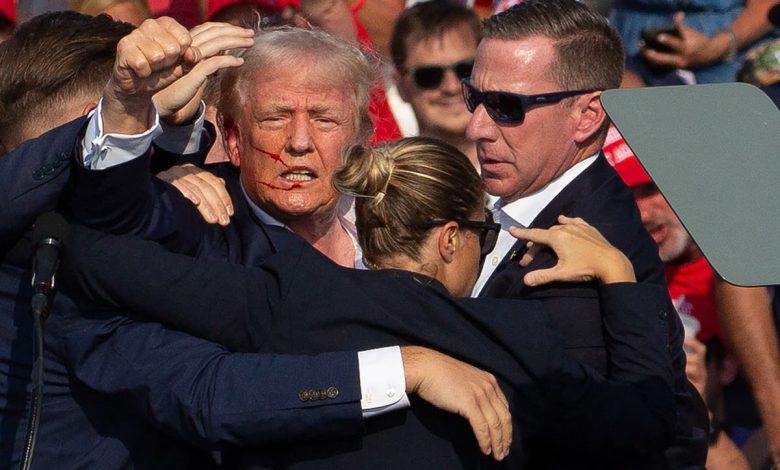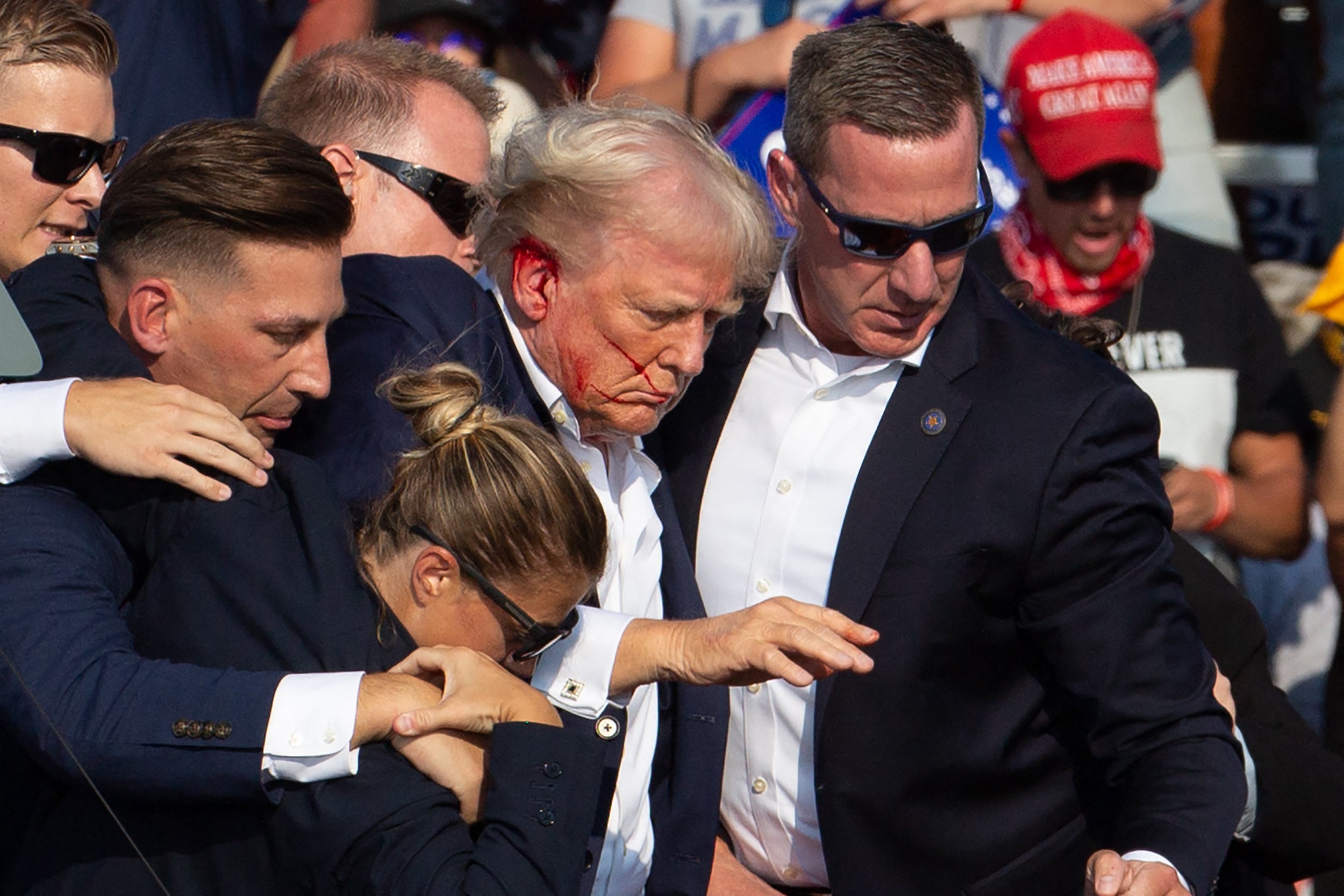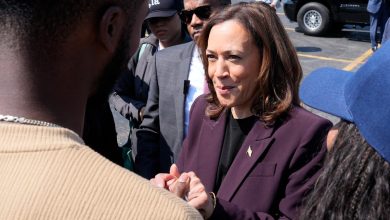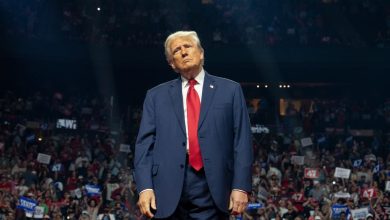Was Donald Trump injured by a bullet or debris? Ballistics experts weigh in

Donald Trump is absolutely certain he was shot in the face last month by a round from a would-be assassin’s AR-15 assault-style rifle.
Maybe he was. But maybe he wasn’t, according to FBI Director Christopher Wray, who is somewhat less sure about exactly what happened at the Pennsylvania campaign rally where the ex-president’s ear was bloodied while he addressed a crowd of supporters.
“I think with respect to former President Trump, there’s some question about whether or not it’s a bullet or shrapnel that hit his ear,” Wray testified on Thursday before the House Judiciary Committee. “There’s a whole lot of work underway and still a lot of work to do.”
An infuriated Trump took to Truth Social a few hours later, lashing out in a rambling attack at Wray, who was appointed by Trump during his single term in office.
“FBI Director Christopher Wray told Congress yesterday that he wasn’t sure if I was hit by shrapnel, glass, or a bullet (the FBI never even checked!),” Trump seethed. “But he was sure that Crooked Joe Biden was physically and cognitively ‘uneventful’ — Wrong!”

Ballistics experts surveyed by The Independent say it is impossible to know exactly what happened without further investigation — and increased transparency from Trump.
Trump and his campaign have declined to provide any official information about his injuries, have not released any of his medical records, and have not authorized the doctors who treated him to speak publicly.
But an analysis published Friday by The New York Times suggested Trump was hit by a bullet, not a fragment or shrapnel. Using a 3D model of the scene, along with input from an expert in audio forensics, the Times studied the trajectory of the first bullet to hit the seating area behind Trump. It reportedly showed the round had traveled in a straight line from the rifle’s barrel and grazed Trump’s ear on the way to its final destination, rather than striking something in between that would have sheared off a piece of something that then hit Trump.
Luke Laterza, a former Newark Police Department sergeant who ran the city’s ballistics lab until he retired in 2016, said the FBI, which has jurisdiction over the shooting investigation, has thus far — as is typical — played its cards extremely close to the vest.
Laterza, who continues to consult for the Newark PD and other law enforcement agencies, told The Independent that while investigators have identified the weapon used by 20-year-old would-be assassin Thomas Matthew Crooks as an AR-15, it’s a platform that can fire various types of ammunition.
“We can assume that it was .223, but [it can shoot] nine-millimeter, .22 long rifle, .308,” Laterza said. “But we don’t know.”

Without access to the actual evidence and investigation details, Laterza conceded it was all but impossible to pin down a solid answer at this point. Still, Laterza said, “I can tell you, he was hit. He was either hit with the bullet tip, the bullet neck, or a fragment.”
But, Laterza went on, “Whether it was a piece of the podium, or it was a bullet, it was all derived from a bullet.”
Rounds of any caliber that are fired from handguns and rifles are subject to fragmenting, but in order for that to occur, “they have to hit something hard,” explained Peter Diaczuk, a professor of forensic science at New York City’s John Jay College of Criminal Justice.
Diaczuk echoed the Times’ findings, pointing out that there were no objects between Crooks and Trump that logically could have created flying debris, and that the podium and seats behind Trump happened to be positioned in such a way that the laws of physics made it unlikely he was hit by a fragment of either, he told The Independent.
This, according to Diaczuk, would probably rule out a bullet fragment as being the object that struck Trump, since, he said, bullets “do not break apart in the air.”
The FBI, in an investigation such as this, tries to reconstruct the shooting as closely as possible.
“The trajectory of the rounds, the [dispersion] of the rounds—how they, in effect, behave, just to have a better understanding of where the rounds came from an where they went,” said Dennis Franks, a retired FBI special agent who was at one point supervising a bureau SWAT team.

Investigators will also interview Trump, which the FBI announced on Friday, and examine all rounds and fragments and match them with the weapon involved “to rule out any secondary shooters,” Franks told The Independent.
Franks cited the same problems as Laterza, in not knowing the caliber of the ammunition Crooks fired at Trump. A 5.56 NATO round, which is similar to a .223 round but not exactly the same, is designed not to pass through its target, in this case, a human body, but to stay within and inflict maximum damage, Franks said. In this instance, he went on, “It would be incredibly lucky for a 5.56 round to just nick the ear.”
“But again,” Franks said, “I don’t know.”
Trump has eagerly included the shooting in his ever-evolving “legend” of himself, recounting the event, moment by moment, during the first part of his 90-plus-minute speech at the recent Republican National Convention. Mimicking his bandaged ear became a fashion statement for some attendees of the party’s nominating confab.
While the FBI continues its work, GOP Rep. Ronny Jackson of Texas, who served as Trump’s personal doctor in the White House, apparently believes the bureau is wasting its time, insisting he’s seen the former president’s medical records after the assassination attempt.
In a letter posted Friday morning to Truth Social, Jackson said there “is absolutely no evidence that it was anything other than a bullet. Congress should correct the record as confirmed by both the hospital and myself. Director Wray is wrong and inappropriate to suggest anything else.”







